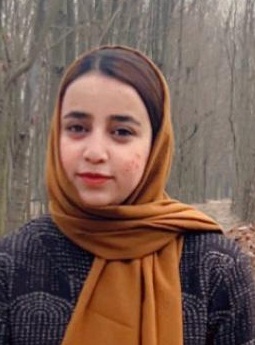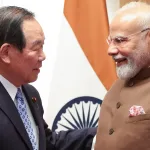Life is the most sacred gift we possess. It is not merely about survival, but about living with dignity, autonomy, and purpose. While it deserves to be protected at all costs, there comes a point when life becomes a prolonged state of irreversible suffering, where the body continues to function but the essence of living quietly fades away. In such moments, we must ask ourselves: does preserving such life truly honour its value?
This reflection leads us into the complex and sensitive subject of euthanasia. Euthanasia, often known as mercy killing, refers to the deliberate act of ending a person’s life to relieve them from unbearable and incurable pain. It can take the form of active euthanasia, where direct medical steps are taken to cause death, or passive euthanasia, where life support or treatment is withdrawn, allowing the natural process of death to take its course. Though it remains one of the most debated issues in the legal and religious spheres, euthanasia is ultimately about compassion, dignity, and the right to choose peace over prolonged agony.
As a researcher exploring euthanasia and the right to die with dignity, I have spent months in studying legal frameworks, constitutional interpretations, and religious texts under the guidance of my supervisor. But beyond the documents and doctrines, I have been confronted with silence. The silence of patients who cannot speak, families caught between hope and helplessness and a society unwilling to engage in one of life’s most difficult conversations: how do we let someone go when there is no hope left?
The Issue of euthanasia is not simply an academic exercise. It is deeply personal, human, and emotional. It is both necessary and important, as it is directly linked with life. I believe dignity should not only define how we live, but also how we are allowed to leave. And in that belief lies a truth: mercy is not abandonment; it is compassion.
When a person lies in constant pain, unable to move, eat, or communicate, entirely dependent on others for every need, can we still call it a dignified life? When machines keep the body functioning but the soul quietly withdraws, what meaning does such existence hold? In these moments, families silently grieve. And those in pain do not beg for more time. They whisper, “Why am I not dying?” For such individuals, death is not an end to fear. It is peace, it is release, it is dignity.
The conversation around death with dignity in India began with the landmark case of Aruna Shanbaug v. Union of India (2011) 4 SCC 454; in this case, the Supreme Court allowed passive euthanasia under strict conditions for patients in a Permanent Vegetative State. While the Court did not recognize a constitutional right to die, it opened the door for future legal and ethical discussions, laying the groundwork for what was to come.
Later, the Supreme Court of India reaffirmed this reality in the landmark judgment of Common Cause v. Union of India, (2018) 5 SCC 1; the Court held that when a person is in an irreversible medical condition, with no hope of recovery, they have the right to die with dignity. Article 21 of the Constitution of India, which guarantees the right to life, was interpreted to include this right. Through this judgement, the Court legalized passive euthanasia and introduced the concept of a Living Will, a legal document that allows an individual to express in advance their wish to withdraw life support if recovery becomes impossible.
Yet even after this progressive step, awareness remains low. Many are unaware of their rights, and others are too hesitant or confused to exercise them. For some, the hesitation does not come from ignorance of the law. It comes from within. The law may grant them the right, but their faith or traditions often hold them back. Death remains a taboo, even when it is the most compassionate conversation we must have.
Behind every such patient is a family, devoted but silently breaking. People in irreversible states, those who can no longer speak, move, or swallow, often become completely dependent. Families try their best, but over time, the emotional, physical, and financial toll becomes overwhelming. Yet they remain silent. Not because they do not see the suffering, but because love often comes wrapped in guilt. Sometimes, letting go is not surrender. It is the most courageous and loving act one can offer.
According to divine law, we are taught that illness and suffering are a test from above. Enduring them with patience brings spiritual reward. We believe that only the one who gives life has the right to take it.
But in modern times, medical advancements have raised difficult ethical questions. Life can now be prolonged indefinitely, even when the body is breaking and pain has replaced every other feeling. After examining various religious texts and interpretations, it becomes evident that certain interpretations within religious traditions suggest that, under exceptional circumstances, passive euthanasia may be viewed as morally permissible, provided it is guided by compassion and carried out with dignity.
These interpretations suggest that when the time to return the soul has arrived, prolonging life through extraordinary means may prevent a person from experiencing a peaceful and dignified death, which is otherwise considered a basic and inherent human right.
Both religious teachings and legal reasoning, nationally and internationally, support the right to die with dignity. It is now widely recognized that the right to a dignified death is a basic and inherent right of every individual.
While passive euthanasia has been legally recognized in India through the landmark Common Cause v. Union of India 2018 judgment, the broader question of euthanasia continues to raise sensitive ethical, social, and cultural concerns. Although the decision was historic and progressive, many believe that Indian society is not yet fully equipped, socially, economically, or institutionally, to implement it effectively or expand it further.
The right to life is a basic and inalienable right, and any move towards the legalization of euthanasia, especially active forms, must be approached with utmost caution. Such decisions require deep societal readiness, strong legal safeguards, and a careful balance between compassion and responsibility.
In the final moments of life, it is the family and loved ones who bear the silent burden of impossible decisions. When treatment no longer heals and suffering becomes unbearable, choosing to let go is not an act of cruelty; it is an expression of deep compassion. Passive euthanasia, in such cases, is not about ending life but about ending pain, allowing death to come with dignity and peace. It respects the humanity of the patient and the emotional courage of those who love them.
And in those quiet, sacred moments, when the law permits and faith allows, the decision lies on us…..? Whether to go for it or avoid it, one must reflect carefully, keeping in view the darker side of this reality.
(Author is LL.M. Scholar, pursuing research on euthanasia under the blissful guidance of Dr. Aneeda Jan, CDOE, University of Kashmir. Feedback: [email protected])








